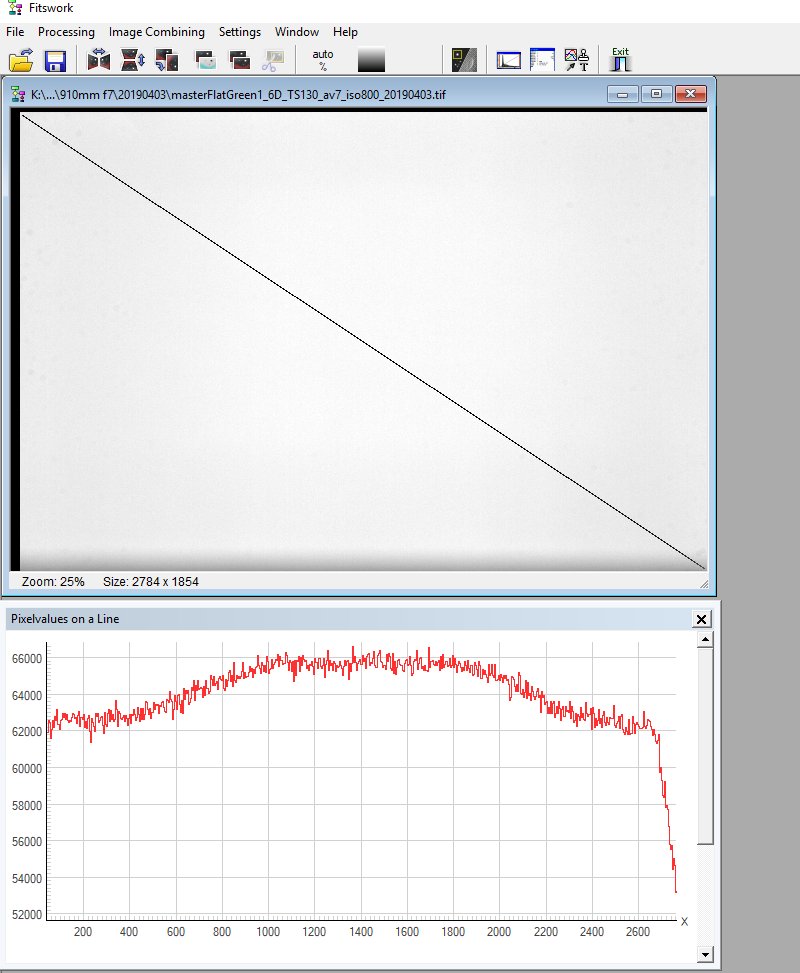|
Advertisement / Annons: |
Project:
|
Contents:
Note: |
9. TS130 3 inch x1.0 field flattener 910 mm f/7:To overcome the problem with the vignetting I rebuilt the telescope to adapt a 3" field flattener. With this I probably can handle a medium format sensor of the size 48 x 36 mm. 
What a difference, now the signal almost doesn't drop at al at the corners. In center the signal is about 66'000 and at the corners about 62'000. The signal drops 6 %. Have a look here how I changed the 2.5" field flattener to a 3" field flattener. The abrupt signal loss you see to the right is because of the DSLR cameras mirror, it shadow the big light cone coming from optics like this. I solve that by either remove the mirror or by a new full frame mirror less camera. As it is now I can't use the last 2 mm of the long side of the sensor. Signal drop at corners relative center = 6 % or 0.09 EV (full frame sensor). TS130 f/7 (not exactly this): The result from this telescope is now excellent even with a full frame sensor. See the photo of the globular cluster M3 at full aperture.
|
|